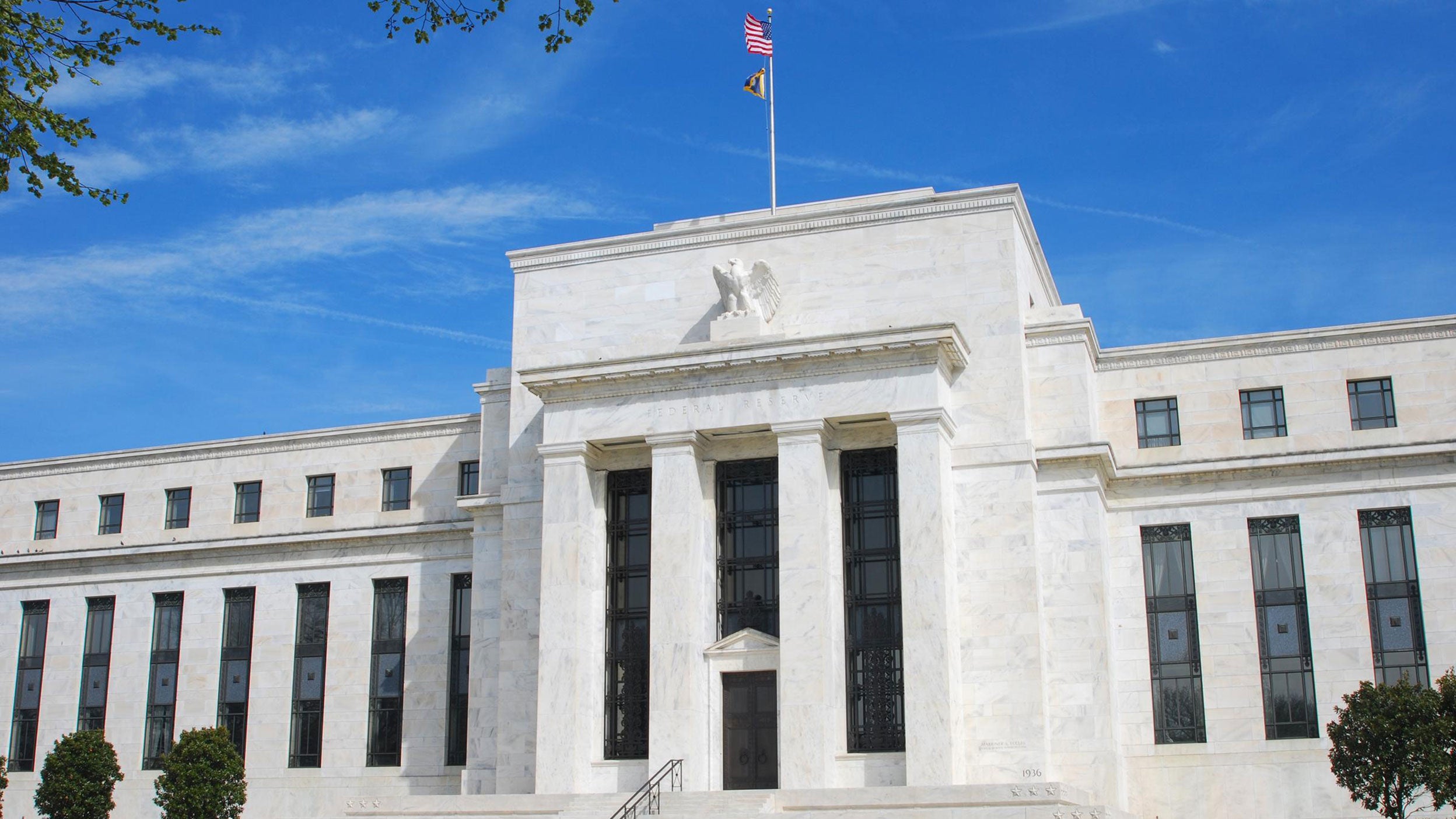The cause
In the last 20-30 years, economists from universities and central banks have failed to investigate the relationship between money and prices in a systematic way – so we now have widespread confusion about what’s really driving the underlying inflation rate. There’s a confusion of relative and absolute prices on the one hand, and a simultaneous failure to examine what was happening to the rate of growth of money relative to its appropriate growth rate in each economy on the other.
Inflation starts as an increase in the quantity of money. Broadly, if the quantity of money grows faster than is required to finance the growth of real GDP, it means higher prices (taking into account some margin for the annual increase in demand for money to hold -- in financial portfolios, or for transactions).
Since the start of the pandemic (between February 2020 and July 2021) M2 in the US has increased by almost $5.3 trillion, or 34.4% in 18 months2. This expansion far exceeds any conceivable financing need in the real economy or any permanent increase in the demand for money.
The consequences
First came the huge increases in asset prices in the domestic economy – equities, home prices and commodity prices. From its low on March 23, 2020, the S&P 500 has risen by about 95%, while the S&P Core-Logic Case-Shiller index of national house prices has risen by nearly 25%3 over the same period.
The second phase was the resurgence of economic activity. Recovery has been held back to a degree by renewed waves of the coronavirus, and most recently the delta variant of the virus. Even so, economic activity will likely remain vigorous well into 2022, boosted by the unprecedented surge in purchasing power.
The third phase is the erosion of domestic purchasing power which has been under way for several months but is gaining momentum. Despite anecdotal cases such as falling lumber prices – much trumpeted by Team Transitory - broad indices of commodity prices are at their highest levels since the oil price crash of 2014-15. We believe these raw material and industrial input prices will inexorably feed through into goods and service prices a few months from now.
Between February 2020 and August 2021, the US headline consumer price index had risen by 5.5%. From the trough of the CPI in May 2020 to August 2021, consumer prices have risen by 6.7%4. Because the prices for goods and services are generally the last to react, their increase has so far been small. In my view, based on the classical “long and variable lags” though, over a period of two or three years they’ll move upwards significantly more, in order to close the gap between the excess money created and the amounts absorbed by economic growth and increased demand to hold money.
The duration
But this is only the start. What appear to be supply-side problems due to shortages, supply-chain disruptions, and demand-supply mismatches will morph into much broader demand-side problems. Shortages of electronic chips, autos, container space, and oil and gas will likely translate into rising rents, higher retail prices and ultimately higher wages.
At that stage, we may be told that inflation expectations are in danger of becoming unhitched from the 2% anchor that the Fed views as critical to maintaining low inflation. The greedy businessman, the consumer, the wage-earner and anybody but the Fed could be blamed for the inflation.
The language used by policymakers at the Fed and elsewhere to describe these phenomena could shift from price increases being “transitory” in 2021 to being something like “more extended but nonetheless short term” issues in 2022.
Both descriptions are wrong.
The truth is, inflation was launched the moment the Fed pumped up M2 by 18% in the first four months of the pandemic, and now by a cumulative 34.4%. As Milton Friedman predicted, it’s taken nearly two years for the surge in M2 to show up in the form of generalised inflation. Moreover, the price inflation will likely persist until about two years after money growth is brought back under control. Based on current data, it’ll be late 2023 before US inflation is properly under control2.
Relative vs absolute; specific vs general
In this analysis, it’s important to understand that inflation, originating from the increase in the quantity of money, ultimately affects all prices in the economy. In other words, inflation is an increase in the overall level of prices, or the absolute level of a price index.
Yet we constantly hear from policymakers, central bankers, most economists and journalists that inflation in any given month is the result of specific price movements. For example, we’ve been repeatedly told over the past six months that supply-chain disruptions are affecting electronic chips, container shipment costs, or the availability of cars and trucks. Next, they could be telling us that it’s energy prices that are “causing” the increase in the monthly price indices.
But they’re all relative price changes. As I explained in “Upside Down Theories of Inflation”, individual prices increase in a random way depending on the availability of the product or service. One of my favourite economists, Al Harberger used to say, “Growth and inflation are like mushrooms. If you plant the spores you know you’ll get mushrooms, but how they emerge is entirely random.”
In the current environment, contrasting the price changes in the US or UK with those in Switzerland or Japan is revealing. Since supply chain disruptions, electronic chip shortages, problems in auto manufacturing or the more recent surge in energy prices are global issues, in theory, prices in the US, the UK, Switzerland and Japan should be rising at roughly the same rate.
But that’s not what we find. Consumer prices in the US are rising the fastest (by 5.25% year-on-year in August), followed by the UK (3.2% in August), but in Switzerland (0.9% in September) they’re barely rising at all, while in Japan (-0.4% in August) they’re still falling5.
What’s the reason? The difference in measured overall inflation rates relates directly to the relative rates of money growth in each economy. The US has had by far the fastest rate of money growth over the past 18-24 months, followed by the UK. Switzerland and Japan on the other hand have experienced only very modest increases in the quantity of money. The lesson? “Inflation is always and everywhere a monetary phenomenon” (Milton Friedman).
As for the US, I predict that it’s inflation will persist at around 5-6% year-on-year in 2022 and remain at about 4% in 2023. Can we really call that transitory?
The response
The most critical issue for financial markets in 2022 is how the voting members of the Federal Reserve react to this torrent of bad news. Will they sit on their hands and do nothing? Or will the governors in Washington be outvoted by regional Fed presidents and be forced to accelerate their rate hikes (currently planned for end-2022 at the earliest)?
In my view, there’s been far too much complacency about the Fed’s new framework of so-called Flexible Average Inflation Targeting (FAIT), the supposed merits of the payment of Interest on Reserves (IOR) and the alleged need to lower interest rates to almost zero immediately upon the emergence of any crisis. Recently, one bold economist at the Fed1 has been brave enough to question the dogma of keeping inflation expectations anchored, in effect saying, “The emperor has no clothes”.
Numerous books have been written about the relation between demographics or ageing and inflation, or between globalisation and disinflation, or about how China somehow contributed to disinflation over the past 20-30 years. All these are cases of mistaken identity, or cases of analysts being misled by the “post hoc, ergo propter hoc” fallacy.
Underlying its failure to control money growth – directly or indirectly – it’s these failures of analysis in the world of academic and applied economics that are the real reason the Fed has allowed the inflation storm to brew and why it must now face the consequences over the next two years.





